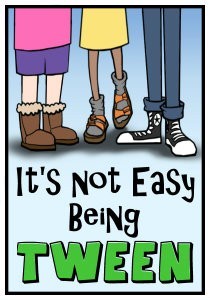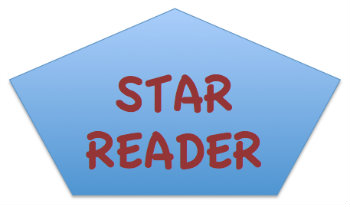6 Ways to Take the Joy Out of Reading
A MiddleWeb Blog

When I returned to school, the topic of our English department meeting was how should we foster our own shared love of reading in and with our students.
I have blogged about my passion for creating a community of readers in my classroom (see We Are All Readers Here), and I could easily add to that list, but in this post I want to explore some of the practices that I’ve witnessed (and others that have been shared with me) that I believe work against the goal of instilling a passion for books.
Kelly Gallagher’s advice
Reading Kelly Gallagher’s 2009 book, Readicide: How Schools are Killing Reading and What You Can Do About It, completely changed the way I teach reading.
He coined the term “readicide” and defines it as: Read-i-cide: noun, the systematic killing of the love of reading, often exacerbated by the inane, mind-numbing practices found in schools. At the time, I was fairly new to teaching English and I took his words to heart.
I completely revamped how I taught whole class novels, to find what Gallagher calls the “sweet spot” of instruction (see 10 Techniques to Teach Whole Class Novels). As a result, sharing a class read has become a rewarding and enjoyable experience for me and my class.
At the time, I still hadn’t solved what to do about encouraging my students to read for pleasure. Then I read The Book Whisperer: Awakening the Reader in Every Child by Donalyn Miller later that same year. Since then, I have refined my practice to its current point and truly believe I have built a reading culture in my class.
I have shared my passion about these practices with colleagues for many years, and I know the ideas of Gallagher and Miller have spread over time. However, I belong to several English teacher groups on Facebook and Twitter and I consistently see and hear things that go against what I have read in professional development books and heard at the many conferences I have attended. In talking to my students, I know many of them have experienced these practices as well.
There are several common threads that have emerged from watching and listening. Whenever I hear of counter-productive practices being used, I try to begin a dialogue that seeks to understand and reflect upon their purpose.
I know that at times teachers have no choice and are instructed to implement damaging pedagogy. But whenever possible, we can and should strive to eliminate harmful practices. Below, I attempt to share some of what I have seen and what my students have experienced – techniques that I believe kill the love of reading for pleasure.
1. Too much busywork
When I read books for fun, I don’t find myself grabbing my notebook to write chapter summaries or look up vocabulary words. I don’t do an arts and crafts project. I don’t complete word search or crossword puzzles. I just cherish the experience and share the afterglow with whomever will listen. In my classroom, there are no graded activities associated with students’ choice reading other than recording the title and author on a bookshelf graphic page in their notebooks.
2. Too much accountability
One of the main questions asked in Facebook groups is how do we hold students accountable for their free reading. For many teachers, the answer lies in the student-dreaded “Reading Logs.” There are many versions of these logs, but most involve parent signatures and many requirements—page numbers, time read, genres read, etc. According to my own students, reading logs are the worst assignment ever.
Another harmful practice is requiring choice reading texts to be associated with a computerized reading program that gives “points” and then having those points count toward their grade. If the idea is to intrinsically motivate students to love to read, then documenting every action is antithetical to that goal. Choice reading should not be used toward a final grade or for data collection. It is simply practice, because the best way to become a better reader is to read widely and deeply.
3. Too few books readily available
The research on this is clear: for students to want to read, they must be surrounded by books of all kinds—both in their school and in their English/reading classrooms. I am blessed to work at a school with a lovely and well-stocked school library, and I spend every available penny of my own money on current, popular books for my classroom library. I realize that not everyone has this luxury, but there are many sources where low or no cost books can be found.
It takes time and effort to build a classroom library, but it can be done. Many of my friends have found great success in developing a “Donor’s Choose” project or applying for grants such as Penny Kittle’s Book Love Foundation. There are other need-based foundations such as First Book, Kids Need to Read, the Library of Congress Surplus Books Program, the Literacy Empowerment Foundation’s Reading Resource Project, and Reading Is Fundamental.
I have also had good luck at stores run by national charity organizations and from library used book sales. Finally, if you know of a teacher in a similar grade who is retiring, ask him or her if they would be willing to pass on their books.
4. Too much competition
I know that there are some teachers and schools for whom Battle of the Books and other reading competitions work well, but it depends on how they are implemented. For students who do not have strong reading skills, being required to participate in a competition in their weakest area can be sheer torture. It is also not fun or engaging to have to watch a small handful of children participate to the finish.

In one school where I taught, the previous teacher had a chart on a bulletin board that listed every child’s name, and they earned a ladybug sticker for each book read. (There are many variations of this out there.) As you can imagine, for the students who read fluently and often, they had quite a long line of stickers. All I can think of is how awful the child who struggled to earn one or two stickers feels.
One of this teacher’s former students came to my class to see if I’d kept the chart. When she saw that I had not, she hugged me and burst into tears. She said thank you and added, through her sobs, “I HATED those ladybugs. They made me feel so stupid.”
Why on earth would I ever want a child to feel that way? Some teachers have tried to make it better and have turned these competitions into a group endeavor, but students still know their place in the pecking order. Why not have each student set their own goal and keep it private and celebrate them achieving it rather than make it public? What purpose does that serve?
5. Too much shame
Then there are the myriad ways in which adults shame our readers. They tell students they are reading a “baby” book that is meant for children younger than them. They chastise them for not reading serious or quality literature. They look down upon their love for graphic novels and tell them they are not “real” books. They embarrass them publicly if they haven’t read a book “everyone” has read. They tell them listening to audiobooks is cheating. I am here to say that I love audiobooks. I read humor essays for brain candy, and think graphic novels are a hugely underutilized resource. If I enjoy these things, why shouldn’t my students?
6. Too little choice and motivation

The use of reading levels to determine what a child can read or what is their “just right” book (especially at the middle and high school levels) is a punishing practice that needs to end. In the words of the inimitable Kylene Beers, “Helping a kid choose a book begins with ‘What do you like?’ and not ‘What’s your level?’”
Finally, children should also be able to abandon books they don’t enjoy. No one forces me to read to the end of a book I dislike. Only by voluminous reading will they know what books are the best fit, the most engaging, the most satisfying.
It’s time to break down barriers to joyful reading!
We know that young children love hearing stories and reading their first chapter books. We also know that adolescents read far less than younger children. Perhaps by making reading more enjoyable, we can reverse this trend. We can stop taking the joy out of reading for our tweens and teens, who are just beginning to gain access a vast global library of books that have the power to entertain them, move them, and deepen their understanding, as Kelly Gallagher and Donalyn Miller did for me.




































Thank you for your post, Cheryl, and for mentioning the importance of a well-stocked school library. I trust your school also has a proactive state-certified school librarian with whom you can collaborate to make sure that the resources of the library are available to students for free choice as well as assigned reading activities.
I would add just one more item to your list. Far too many secondary students do not enjoy reading because they are unable to make meaning from text. Whether the text is in a free choice book, a textbook, or materials they have accessed online, all students need to become proficient users of reading comprehension strategies. When they know how to make sense of text, students will be able to experience the joy reading offers those who know how.
Great article, Cheryl. Another resource is “Passionate Readers: The Art of Reaching and Engaging Every Child” by Pernille Ripp, which shows how Ripp built a culture of reading in her middle school class. My review of her book will be published at MiddleWeb soon.
I loved that book and I love Pernille’s blog. I have joked with her that she and I share a teaching brain because we so often write about the same topics. It’s because our philosophies are aligned and we teach very similarly. I look forward to your review.
Bravo! Life is too short to finish a book that is not interesting.
I agree on most points, but I do see opportunity in responding to the literature. I offer students a large menu of ways to do this including making text-to-self, text-to-world, or text-to-text observations; writing about a setting or character they loved; making predictions and jotting down questions; writing about the theme or the author’s message; writing about the climax or any of the parts of plot; etc. Students can accompany their writing with drawings, charts, maps, cartoons, etc. They can write in verse or prose. There are so many options, and, for most, responding to what is being read is more likely to enhance the experience than detract from it. I know I keep track of what I read in my “Book Lover’s Journal.” I tell my students how much I enjoy that method of responding to what I read. I believe response to the literature increases reading comprehension and helps readers of any age make connections. It also helps one remember what was read not only months ago but years ago if the journals are kept. Reading helps with the writing process and writing helps with the reading process.